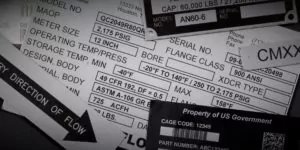Medical Equipment
From vital monitoring machines to full robotic surgery devices, the world of modern medicine is rife with machines and equipment that help doctors, nurses, and other medical practitioners perform their duties.
What Are Medical Equipment Labels Used For?
Asset Traceability
Hospitals are large scale operations utilizing a ton of resources and staff. These organizations rely on accurate tracking of machines, equipment, and other medical supplies.
Medical staff need to know what resources they have available if they are going to effectively treat their patients. UDI Labels are typically required by the manufacturer of medical devices as well.
For example, if a patient needs a ventilator, the nurses must be able to instantly find out if they have any available to them. This is where barcode scanning becomes essential.
Devices are typically scanned and logged to each patient so each device can be individually tracked.
Loss Prevention
Going hand and hand with asset tracing is loss prevention for medical devices. Theft is not uncommon when it comes to PPE, and even expensive medical equipment.
Barcode labeling helps ensure that every hospital asset is where it belongs.
Identification
It’s impossible to visit a major hospital these days without having barcodes scanned. From your file, to your wrist band, to the equipment they access, everything is logged and put into the system.
This is not only for asset management purposes, but also to ensure patient safety For example, when a nurse is going to provide a patient with a medication, they scan the patient’s wrist band to ensure it is the right person. The medication itself is then scanned to not only log it but also make sure the nurse has identified the correct medication and dosage which was prescribed.
These techniques seem inconvenient at times but absolutely save lives and prevent accidents each and every day.
Safety Information/Inspections
Another benefit derived from labeling medical equipment is for safety. Maintaining a safe environment for not only patients but medical practitioners is incredibly important for hospital systems.
Nameplates and labels are attached to equipment which often indicate safety guidelines for the machine.
In addition, regular inspections of equipment ensures everything is functioning appropriately. Having clear labeling on a device helps speed the inspection process up, as well as helps to improve the accuracy.
Marking Processes
Photo Anodization
The metal based photo anodization process produces a durable metal nameplate with custom information embedded.
In the medical field, this is primarily used for marking devices and machines. From x-ray machines to vital stations, there are countless uses for these labels.

Photo anodized labels can also include any type of 1D or 2D barcodes, including:
- QR Codes
- UPC Codes
- Data Matrix
- And More
In addition, any other data needed on the tag can be included, such as a manufacturer logo.
The benefit of photo anodization is high durability, as these tags will last upwards of 20+ years in a medical environment.
Digital Printing
Digitally printed labels are the most commonly used form of identification in the medical space. These printed labels are used on nearly everything you will come across in a hospital environment.
From medical equipment to prescriptions and warning signs, there are many uses for this type of identification.
Wrap-Up
Hospital systems are one of the most important infrastructural pieces to our lives. We rely on doctors and nurses to aid us in our time of need.
In order for these workers to do their jobs effectively, adequate labeling must be provided on their equipment. With the added traceability and safety benefits, patient care becomes that much more manageable.